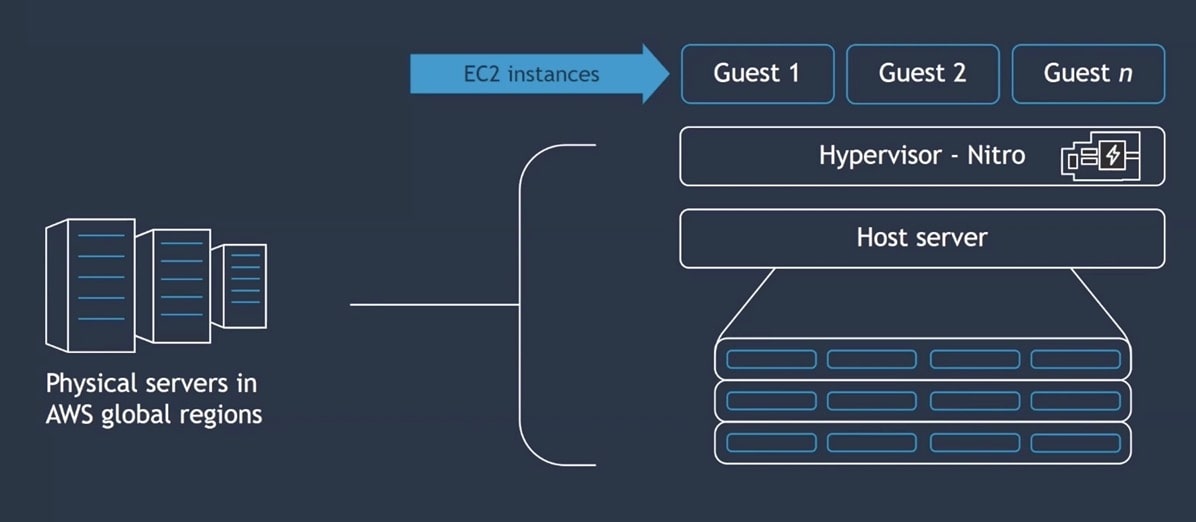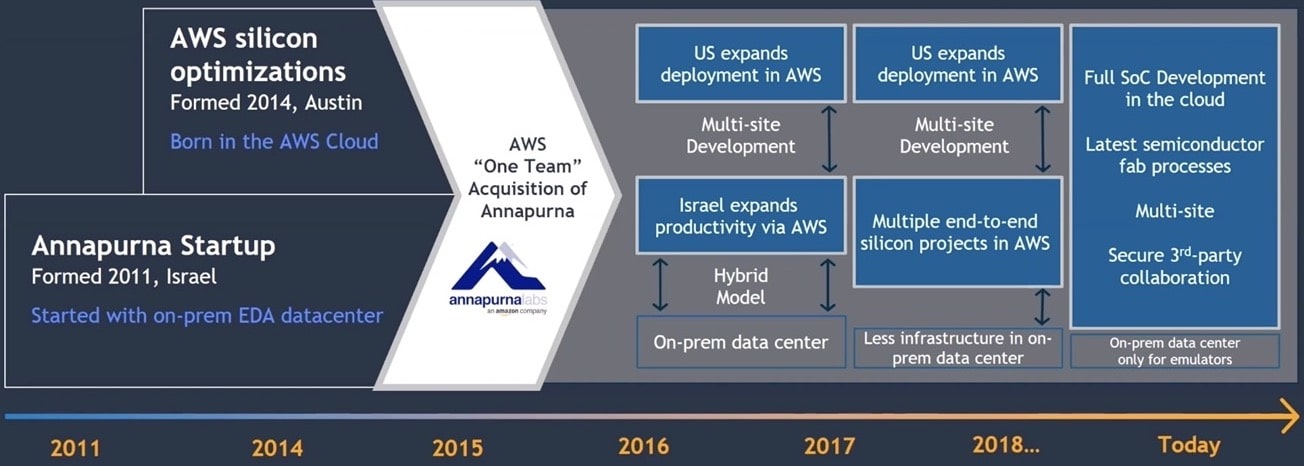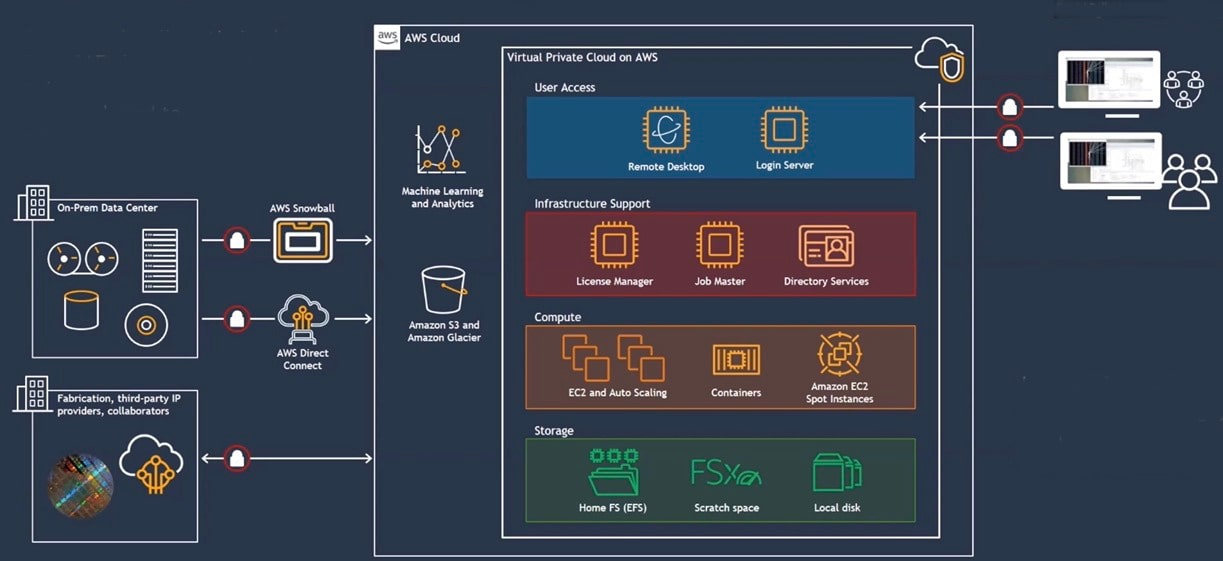I first remember blogging about EDA in the cloud starting back in 2011, so what’s changed in the last 10 years you may ask? In 2011, it was basically a handful of EDA point tools running batch mode in the cloud, and you were on your own to integrate those into a coherent flow, so expect help from the CAD and IT departments for sure. In 2021, the cloud providers are all designing their own custom chips to improve the speed and efficiency of running their service businesses. I attended the Cadence LIVE event last week to get an update on what Amazon Web Services (AWS) was offering, and even how they have done their own custom chips.
David Pellerin of AWS was the presenter, and his background includes stints at EDA vendors, an IP startup, FPGA accelerator card business, plus an author of five books. Internally at Amazon, they design their own chips all the way starting from the smart speaker Amazon Echo, up to the AWS Graviton processor with 64-bit Arm Neoverse cores.
Why Cloud-based EDA
Good question, and the answer is that big SoC designs require even bigger compute resources for scaling EDA runs quickly, while offering a secure design environment that keeps IP thieves and spies locked out, reducing the risk to missing a schedule, all while keeping EDA costs within budget and giving teams a place to collaborate. Elastic Compute for the Cloud is the AWS phrase for their cloud servers, EC2.
For x86 servers they offer the EC2 M5zn instances using Intel Xeon processors, or you can choose Arm-based servers (Graviton) for running your EDA tools from Cadence. The AWS stack for running EDA tools has several components:
Custom Silicon at AWS
Engineers at Amazon have designed some custom silicon that fits between routers and the compute and storage servers, improving reliability and performance across EDA workloads, which are similar to other HPC workloads.
The three examples of custom silicon presented were:
Each of these projects was developed in AWS Cloud, for the AWS Cloud. The history of Amazon and running EDA tools in the cloud spans the last 10 years and involves the Annapurna startup in Israel, where they started out with on-premise EDA tool usage, then gradually moved into the cloud:
Their first cloud EDA tools were used for running functional simulation regression, then as tape-out time neared the EDA tools were mostly Static Timing Analysis (STA) and parasitic extraction runs. Today, you can run the entire EDA tool flow in the cloud, instead of just point tools.
Arm
The Physical Design Group at Arm started using AWS Cloud in 2017, and was able to reduce their characterization run times with Liberate from months to just weeks. Using the AWS Graviton2 processors brings significant cost savings versus other processors.
Migrating to the Cloud
Many EDA users prefer to have a hybrid approach of using an on-premise data center, along with AWS cloud. This diagram shows how a hybrid cloud works, and on the right are IP and EDA vendors being granted limited access to your secure design environment for technical support issues.
For high-performance storage options, you can choose from:
- Block storage (Local NVMe, SSD, Amazon EBS)
- File storage (Amazon EFS, FSx for Lustre)
- Object storage (Amazon S3, Amazon S3 Glacier)
Semiconductor Supply Chain
Using the cloud can now enable the entire supply chain to be more secure, while offering collaboration along the way using: EDA tools, design data, design and verification, IP libraries, SW and firmware, wafer fabrication, assembly and test. There’s also the concept of a collaboration chamber, so that based on your needs the data can be securely shared among trusted parties:
- EDA/IP users
- Yield analytics
- Foundry IP
- Digital Twin
- EDA Vendor
- IP / Design services vendor
- PCB design team
- Foundry/OSAT
Summary
The past 10 years have brought about some gradual and some dramatic changes in how EDA designs can be performed in the cloud, collaboratively. We’re way beyond point tool offerings in the cloud, so there’s a viable platform in considering AWS Cloud for your complete EDA tool flow needs. Cadence has a close relationship with Amazon in offering their EDA tools on AWS Cloud, so users should come up to speed very quickly.
Amazon IC engineering teams are also users of the AWS Cloud internally to get their chip design projects completed, so you know that it’s quite well-tested.
Related Blogs
- Chip Design in the Cloud – Annapurna Labs and Altair
- NetApp Simplifies Cloud Bursting EDA workloads
- Arm Announces Neoverse Update, Immediately Following V9
Also Read
Connecting System Design to the Enterprise
Keynote from Google at CadenceLIVE Americas 2021
Cadence adds a new Fast SPICE Circuit Simulator
Share this post via:








Comments
There are no comments yet.
You must register or log in to view/post comments.